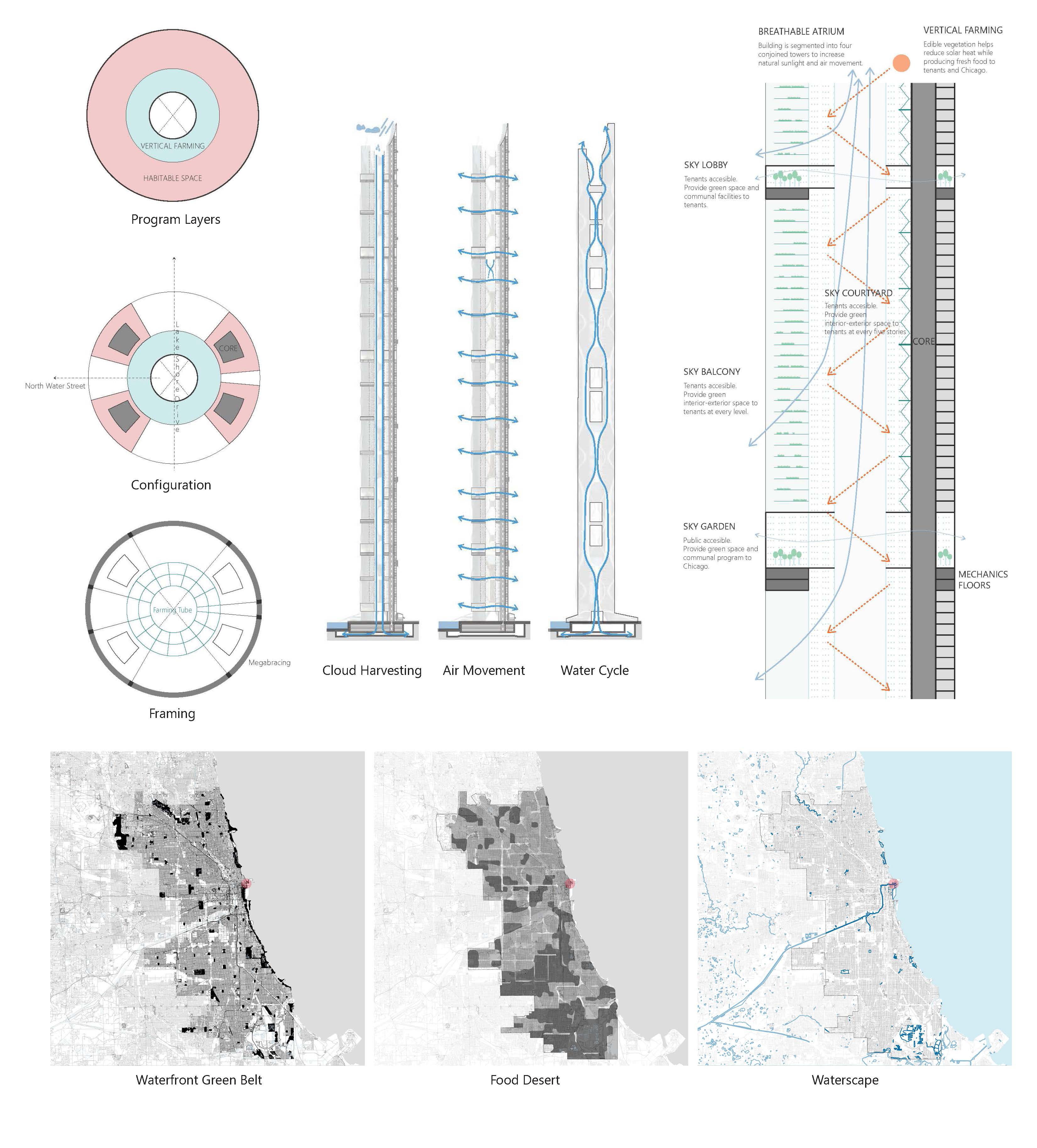Sky Droplet – Vertical Mile-High Community in Chicago

The biggest problem facing us as a global species is where the food for the next three billion people will come from?
– Dickson Despommier
Food desert is a geographic area where residents’ access to affordable, healthy food is restricted or nonexistent due to the absence of grocery stores within convenient traveling distance. This disparity of available quality, nutritious food has plagued low-income, urban neighborhoods in Chicago for many years. What if “eating local” in Chicago meant getting your fresh produce from just blocks away? And what if skyscrapers incorporated vertical farm-scape that feeds its inhabitants? What if the mental link between food production and its consumption was re-established in such a tactile way that the community enjoyed the tranquility of nature without having to detour from the fast urban life pace? What if the next generation of us growing up being aware of the cycle of the seeding, cultivating, and harvesting of the plant? What if …?
Inspired by the water droplet pattern, the project intends to create a mile-high vertical community at the Chicago lakefront, connecting with its physical and socio-economical context. The vertical farming centered at the tubular structure continues the lakefront green belt vertically while addressing inequality in fresh food distribution in Chicago. We distill two major elements from the droplet pattern: while the gap between each droplet is translated into the breathable void among the habitable space, the water's rippling effect was taken to develop the podium and landscaping around the tower.
The four conjoined towers are laterally supported by two layers of bracing structure to increase the structural depth. On the outer tube, based on a diagrid pattern spanning 25 stories in one unit, exoskeleton structures weave the building in a network of fluid lines that integrate mega-bracing with lateral support. Supported by the diagrid structure, the inner void allows more light and air into the tower. In terms of vertical transportation, the project incorporates the MULTI elevator system to facilitate an efficient circulation that accommodates a complete loop of living, working, and entertaining for the vertical community. The tower also utilizes renewable energy, including wind turbines, rainwater collection, and cloud harvesting to make a self-sustaining community.
Collaborated with Dreama Simeng Lin









